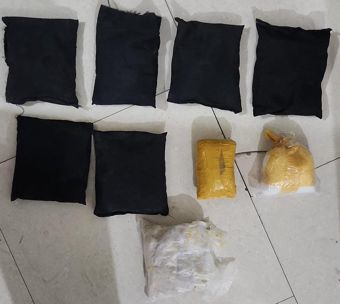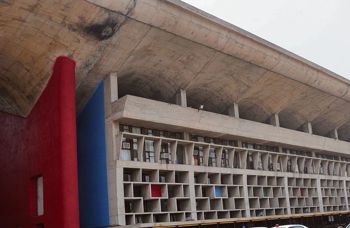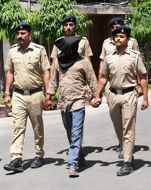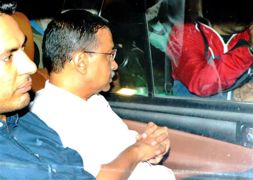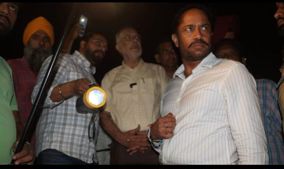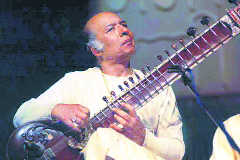
Ustad Vilayat Khan accepted only one title Aftab-e-sitar (sun of the sitar) given by fans – he felt he had been offered recognition too late by the government, whose officials he felt were not competent to evaluate his music. His unmatched touch on the sitar, the delicacy of his playing, and his total mastery over his instrument indeed put him on a pedestal where there was no other.
Shailaja Khanna
Ustad Vilayat Khan, arguably the finest sitar player of his generation, had a connection with Shimla that is fast being forgotten. During the mid 1960s, he came to Shimla as a guest of Raja Padamjit Singh, stayed a season in Strawberry Hill, and for the next season rented Aira Holme cottage in Chota Shimla. The Himachal Pradesh government, and the then Chief Minister wisely decided to entice the Ustad to stay on, and honoured him by renting him one of the Raja of Jubbal’s palaces, Parimahal, which was unoccupied. Situated beyond Kasumpti, this wonderful property was made available at the princely sum of Rs 1 per year! The palace, perched on the top of a hill, had a wonderful 360 degree view of the mountains, with lovely grounds. The Ustad lived in Shimla for a few years in the late 1960s, then for family reasons shifted to Dehradun, and then to the US.
Unusually, he returned the property to the government when he left, something that is rarely seen nowadays.
Today, Parimahal houses offices, and most people have forgotten the splendour of the home as it once was, with its expensive carpets (the Ustad was a true aesthete and loved beautiful things).
While in Shimla, his son, now famous as Ustad Shujaat Khan, went to Bishop Cotton School as a day scholar, and daughters, (late) Yaman and Zila went to Jesus and Mary school. (Vilayat Khan’s first wife was a beautiful Hindu socialite from Calcutta, (late) Monisha Hazra). The Ustad used to pass his leisure time in Shimla by taking long walks, socialising with the local gentry with elaborate picnics and garden lunches and playing poker. Those were times of leisure and elegance, and the company of like-minded friends was savoured. Old friends remember his cobalt-blue Mercedes that he drove up to Shimla; this was a much-treasured gift from the King of Afghanistan.
Of course, the bulk of his day was devoted to his music; several disciples used to come up to Shimla to continue learning from him. Old timers also recall the times when the famous Banaras gharana table doyen Pt Samta Prasad came and stayed in Shimla, at Aira Holme cottage before the Ustad moved to Parimahal. Apparently the informal music sessions used to carry on late into the night. Of course there were also rare concerts at Gaiety Theatre and at Strawberry Hill, the residence of his friend.
Another link with Himachal was the fact that his mother, who belonged to a leading vocal gharana, was the daughter of Ustad Bande Hassan Khan, who was the court musician in Nahan for some years. Since his father, the legendary Ustad Inayet Khan died when he was around 12, his mother was a huge influence throughout his life and also taught him. His maternal uncle Ustad Zinda Hassan (“mamu”) also spent a lot of time in Shimla with his nephew.
Ustad Vilayat Khan accepted only one title Aftab-e-sitar (sun of the sitar) given by fans – he felt he had been offered recognition too late by the government, whose officials he felt were not competent to evaluate his music. His unmatched touch on the sitar, the delicacy of his playing, and his total mastery over his instrument indeed put him on a pedestal where there was no other. His technical innovations on the sitar have resulted in what is now known as the “Vilayat Khan” style of sitar; today he is famous for popularising and expanding the gayaki ang (vocal aspect) in sitar playing.
Sadly during his lifetime he refused to record with All India Radio, then the most prolific archiving body in India, so all his music played at his peak in the 1950s-1960s is available only through private-label recordings. In his later years, he changed his mind on his total boycott of the government-run media and recorded a series of episodes, “Jugalbandi”, for Doordarshan in which he was the host for several memorable concerts.
Ustad Vilayat Khan was a complete aesthete, in every way. Always impeccably attired, he was a role model for a younger generation of more image-conscious artistes. With his impeccable eye, he collected the finest shawls, jewellery, and accessories. All his senses were very refined – be it of taste – he loved rich food, or smell – he always bought and used the world’s finest perfumes.
One hopes that an annual concert or festival in Shimla in his memory is instituted soon.
(The author writes on music, musicians and matters related to music)





















